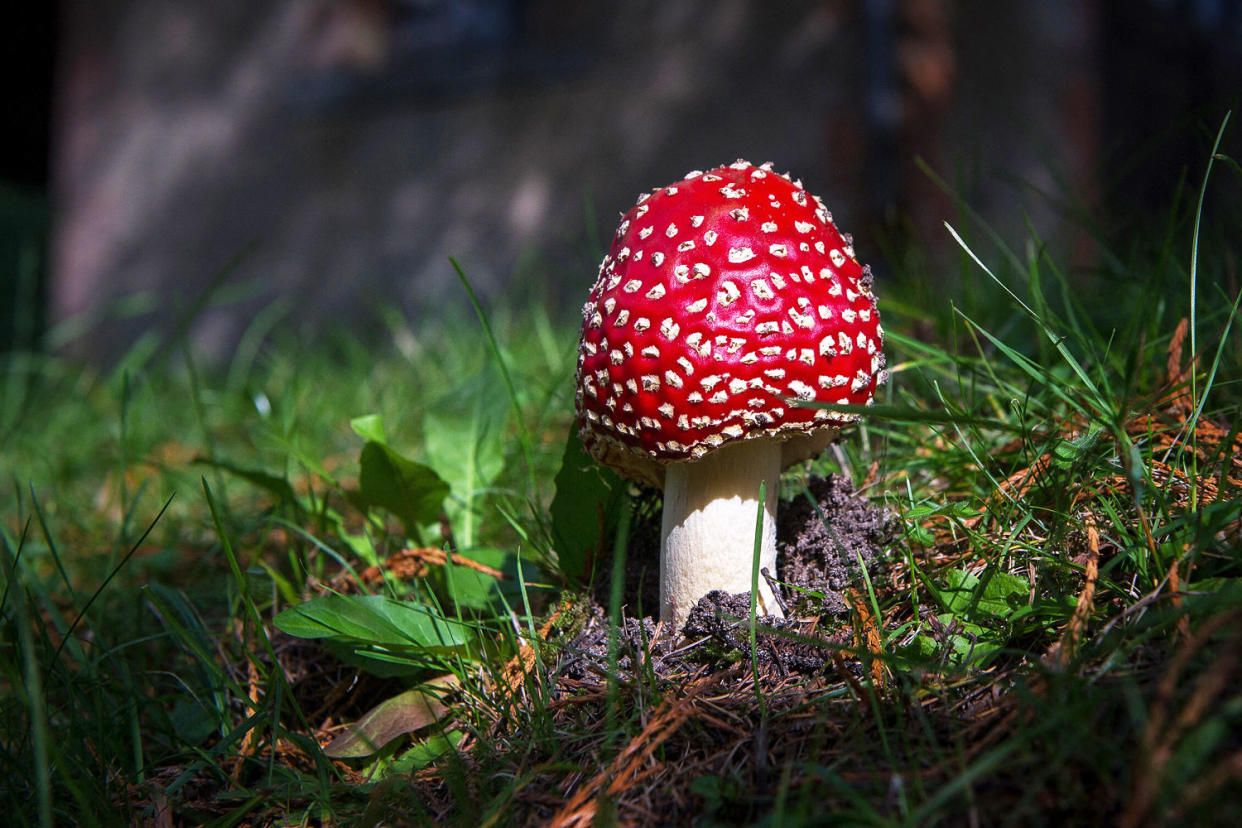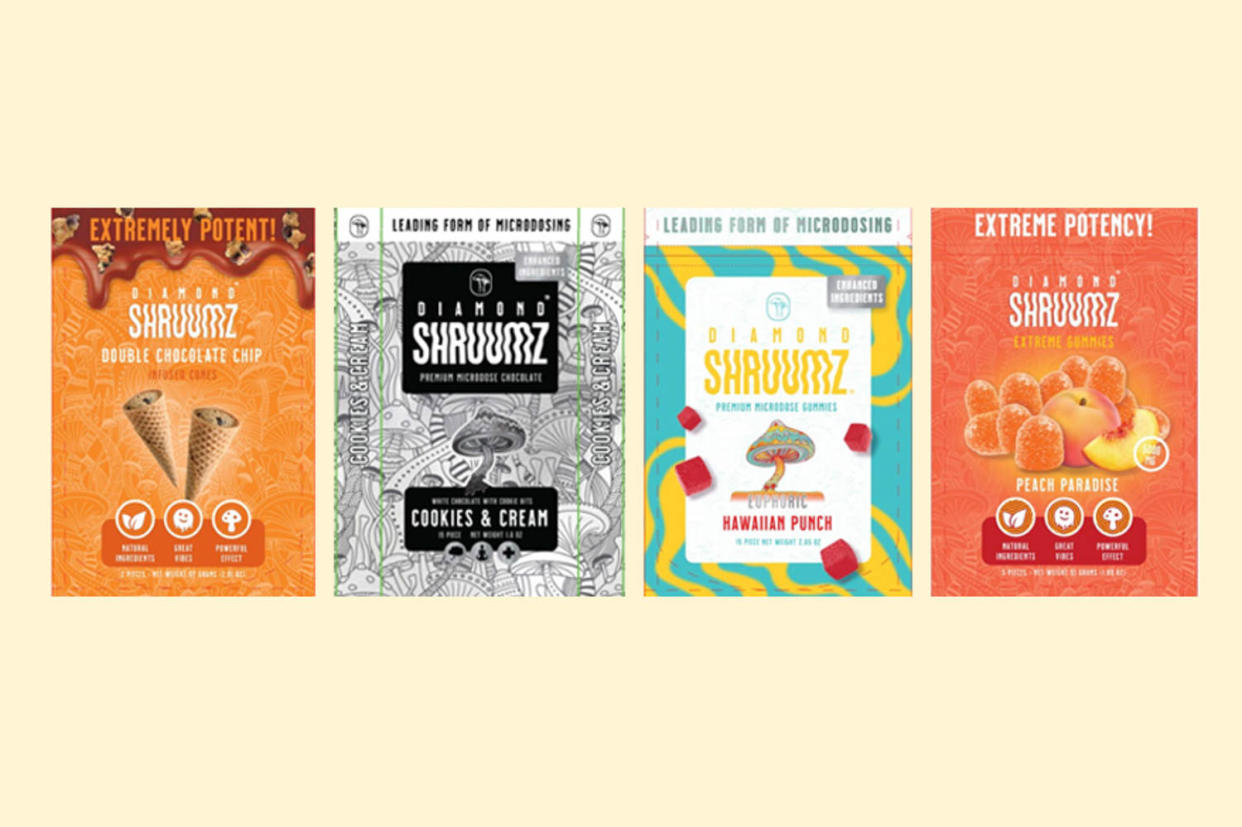Mushroom edibles are rising in popularity. It's hard to say what's in them.
Mushroom edibles are soaring in popularity across the U.S., claiming to offer a variety of mind-altering experiences, from the mild — a boost in focus from a “microdose” — to psychedelic trips. But the effects don’t necessarily stem from psilocybin, the Schedule I chemical found in so-called magic mushrooms.
Often it’s a mushroom called Amanita muscaria — at least according to the product label. (That’s if the label lists a specific mushroom or compound at all. Sometimes it may just say it contains a “proprietary” or “magic” blend.)
The mushroom, which resembles the classic power-up boost in the Super Mario games, is red with white spots. It contains a number of chemicals, the most notable being muscimol, a hallucinogenic compound that can alter mood, perception and behavior.

In reality, what’s going into many of these products remains an open question.
“They’re unregulated, and no one knows what they’re putting in them,” said Dr. Avery Michienzi, an assistant professor of emergency medicine at the University of Virginia School of Medicine. People might be taking a different dose from what’s on the label or think they’re taking one thing and actually taking something else entirely, she said.
Indeed, with the rise in popularity, there has also been a growing number of alarming reports of people being sickened by edible mushroom products.
At the end of June, the company Prophet Premium Blends recalled its Diamond Shruumz edible mushroom products after a number of users fell ill. As of Monday, the Food and Drug Administration had identified 69 illnesses in 28 states linked to the edibles, including 36 hospitalizations and one possible death. The Centers for Disease Control and Prevention issued a warning to health care providers last month to be on the lookout for patients who had consumed the product.

People who became ill after they ate the Diamond Shruumz edibles reported a variety of severe symptoms, including seizures, loss of consciousness, confusion and abnormal heart rates.
According to the company, the products contained “higher than normal” amounts of muscimol, to which it attributed to the illnesses.
The FDA’s investigation is still ongoing; further testing by the agency found other substances, including psilacetin, a compound related to psilocybin that can have mind-altering effects.
Christopher Pauli, CEO at Tryptomics, a lab that specializes in analyzing plants and fungi, said psilacetin is commonly found in mushroom edible products. Both psilacetin and psilocybin are converted in the body to psilocin, the chemical that is ultimately responsible for the psychoactive effects, he said.
An explosion of products
Over the last year, there has been an explosion in the number of mushroom products, particularly in vape shops, said Eric Leas, an assistant professor at the Herbert Wertheim School of Public Health at the University of California, San Diego.
“We really started seeing a bunch of them popping into shops last fall,” said Leas, who runs a statewide program that monitors products that are sold in vape shops.
At ShroomLand LA, a mushroom dispensary in the Venice neighborhood of Los Angeles, business is booming.
Rod Mendez, the store manager, said the shop has been inundated with customers since it opened last year.
“We see a lot of people with muscular pains, people that have sleeping problems or even eating disorders,” Mendez said, estimating that it is selling around 400 mushroom edibles a week. “Mushroom edibles are the new vapes,” he added.
Mendez said that the recent FDA warning about Diamond Shruumz didn’t give the store any problems. “In the six months that I’ve been working in the store, I have never seen someone having any problems with the products regarding effects or quality or something that was bad at all,” he said. All the products in the store, he said, are lab tested and certified, with test results available to customers who ask for it.
Last month, Leas and others published a letter in the American Journal of Preventive Medicine calling for increased regulation of Amanita muscaria products, citing a 114% increase in Google searches related to the products.
Underscoring how recently mushroom edibles have emerged on the market, poison control centers added codes to better track cases related to the products in late 2023, said Kaitlyn Brown, the clinical managing director of America’s Poison Centers, the group that’s working with the FDA and CDC on the Diamond Shruumz investigation.
“We’re seeing them emerge where we hadn’t seen it before,” said Dr. Christopher Holstege, director of the Blue Ridge Poison Center in Charlottesville, Virginia. “The poison control centers are always the tip of the iceberg.”
Blue Ridge Poison Center has managed five cases of people who were sickened after having eaten mushroom edibles, all labeled as containing Amanita muscaria, since September. The cases were detailed in a report published Thursday in the CDC’s Morbidity and Mortality Weekly Report.
Four of the cases were in adults who were treated in the emergency room after they developed symptoms including confusion, rapid heart rate and chest pain.
Last month, the authors wrote, the poison control center also received a report of a 3-year-old who was hospitalized after having eaten two Amanita muscaria gummies. The child, whose symptoms included sleepiness and vomiting, didn’t require any treatment and was discharged after one day.
The authors weren’t able to find the specific brands the people reported consuming, but they bought and tested six similar products bought at gas stations and smoke shops. Four of the six products contained psilocybin or psilocin; none contained compounds found in Amanita muscaria mushrooms. They were also found to contain compounds including caffeine, ephedrine and kratom.
“I think that is a dangerous ground when you’re starting to take things when you don’t actually know what they are,” said Michienzi, who was the lead author of the report.
Holstege said the true scope of the health risks for such products may be hard to quantify, as compounds like muscimol require specialized lab testing that isn’t routinely available for doctors.
“I think it’s a huge problem right now that we can’t test for it, so it’s hard to know exactly how much is out there,” he said. “You’re basically going to be left with someone that had complications like seizures and they got better, and we scratch their head and aren’t sure exactly what caused it.”
Are mushroom edibles safe?
Amanita muscaria edibles do come with risks. One of the biggest, Holstege said, is the risk of seizures.
Dr. Mason Marks, senior fellow at the Petrie-Flom Center for Health Law Policy, Biotechnology, and Bioethics at Harvard Law School, said that while he wouldn’t recommend consuming such products, he doesn’t think banning them outright would solve the problem, either.
“It’s kind of like whack-a-mole, where if you prohibit psilacetin then something else might crop up,” he said. “Prohibition is not the solution, but educating people about this can be quite helpful.”
He drew an analogy to delta-8 THC products, unregulated cannabinoid products that rose in popularity as a workaround to obtaining marijuana in states where it is illegal.
Marks said he would like to see minimal regulatory standards set to ensure that what’s in the product is actually what consumers are getting. He also suggested, as an extra safety step, that consumers look at the lab analyses detailing what’s in the products. While those are typically provided by the companies, he acknowledged that sometimes they may not always be reliable.





